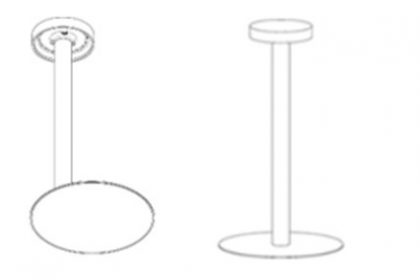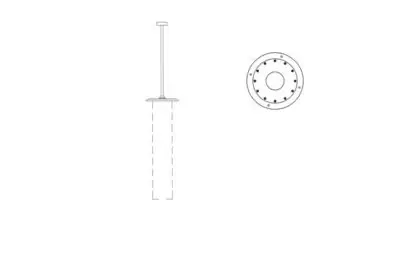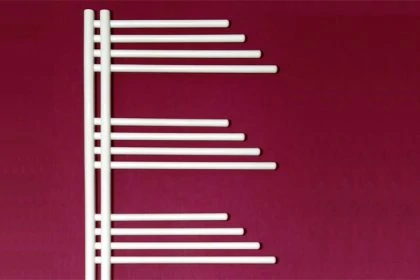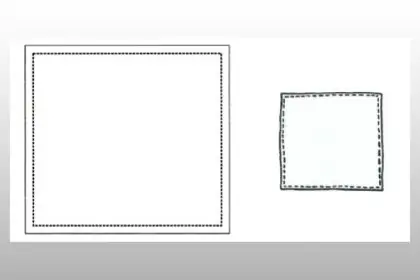The European Court ruled on the invalidity of a lamp design. It was about individuality and freedom of design – and about the application for invalidity, although the older design is no longer valid.
Comparison of two Community designs: Lamp Design

The design disputes before the European Court of Justice (CJEU) concerned the comparison of two lamp designs, the parties to the dispute being both Italian lamp manufacturers. This is because a design may only be protected as a design (called a European protected design “Community design”) if it is new and sufficiently different from other comparable designs. Time and again, this is an issue in court.
In July 2014, the applicant, Davide Groppi Srl (Italy), had a lamp design of a table lamp filed as a Community design under European design protection. Subsequently, in March 2017, Viabizzuno Srl (Italy) filed an application for a declaration of invalidity of the contested design with the EUIPO. This application for a declaration of invalidity was based on Article 25(1)(b) of Regulation 6/2002 in conjunction with Articles 4 to 6 thereof in relation to its own earlier design.
Simply and briefly put, Viabizzuno Srl referred to its own earlier lamp design and argued that the newer lamp design did not sufficiently distinguish itself from it. This is referred to as the “lack of individual character” ground for invalidity.

The Cancellation Division and Board of Appeal of EUIPO had granted the application for a declaration of invalidity, finding that the lamp designs to be compared were lamps consisting of the same three differentiated parts (a base, a stem and a lampshade) which were visually almost identical; there was therefore a sense of ‘déjà vu’ with respect to the contested recent Community design of the applicant, Davide Groppi Srl.
The Italian company brought an action against that decision, alleging infringement of Article 25(1)(b) in conjunction with Article 6 of Regulation No 6/2002 as its sole plea in law.
Novelty, individual character and differences in overall impression
Art. 25(1)(a) and (b) of Regulation No. 6/2002 are intended to prevent the registration of Community designs which do not fulfil the requirements of “novelty” and “individual character” within the meaning of Art. 5 and Art. 6 of the Regulation.
The focus of the hearing before the European Court was therefore, in addition to the aspect of “individual character”, the application of Art. 6 of Regulation No. 6/2002. This includes the examination of the similarity of the products concerned and the comparison of the overall impression created by the designs to be compared – at the “date of filing” of the earlier Community design.
Assessment of individual character
The assessment of the individual character of a Community design is essentially a four-step examination, the CJEU explained. As following these are
- the economic sector of the products in which the design is intended to be incorporated or to which it is intended to be applied
- the degree of knowledge of the state of the art and the degree of attention of an informed user to similarities and differences in the comparison of the designs
- the degree of freedom of the designer in developing the design, the influence of which on the individual character is inversely proportional,
- and, having regard to the individual character, the result of the most direct comparison of the overall impressions produced on the informed user by each of the contested design and the earlier design which has been made available to the public.
A designer’s freedom
A designer’s freedom of design is repeatedly disputed before the courts, because this freedom of design is often limited by the technical function of the product. Moreover, freedom of design is not treated in court as an independent factor determining how much two designs must or may deviate from each other.
The freedom of design is a factor, as the CJEU described it, which makes it possible to nuance the assessment of the individual character of the contested design.
The fact that there is so much dispute about freedom of design is due to the inverse proportionality rule: the greater the designer’s freedom of design in developing the design, the less sufficient small differences between two opposing designs are to produce a different overall impression on the informed user.
In the present case, however, this was not an aspect of dispute. The Board of Appeal had taken the view that the freedom of design was very broad, if not practically unlimited. This assessment, which, moreover, was not contested by the applicant, was expressly confirmed by the CJEU.
Impression of “déjà vu” – despite small differences
Ultimately, the great freedom of design was the reason for the failure of the action. In the following, the CJEU confirmed the opinion of the Board of Appeal that there was a “déjà vu” in the comparison of the two lamp designs.
It was true that small differences were discernible in the direct comparison of the visible elements, and there were also small differences with regard to the economic sectors of the products – the younger, contested lamp design is for outdoor lighting, the older lamp design for indoor lighting.
However, in view of the very large freedom of design, these differences were not sufficient to remove the impression of “déjà vu” and to distinguish the designs at issue in the perception of the informed user, the CJEU ruled and dismissed the action.
Not validity decisive, but disclosure
Incidentally, the EUIPO had declared the earlier design invalid on 30 October 2018. Therefore, the applicant argued that the validity of the earlier Community design had thus ceased, but that this was the logical and legal prerequisite for the application for invalidity against the own lamp Community design. But in vain; it is not the validity of the earlier design that is decisive, but its disclosure, the CJEU stated.
Would you also like to protect your design or your trademark?
We consider each case individually and carefully.
Our lawyers have many years of expertise in design law and trade mark law as well as in the entire field of intellectual property and are entitled to represent you before any court – in Germany and also internationally.

Sources:
Judgement of CJEU, EU:T:2021:363
Image:







Leave a Reply